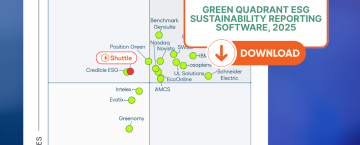TSH in Pillar 2: A Strategic Option for Companies?
Introduction
International tax regulations are evolving with the OECD’s Pillar 2, and companies need to adapt quickly to stay compliant.
Among the transitional measures introduced, the Transitional Safe Harbor (TSH) temporarily simplifies the calculation of the Effective Tax Rate (ETR).
But beware: TSH is an option that does not apply to all entities, and must be exercised with caution.
- What are the benefits?
- Who can benefit? How to apply it correctly?
This article explains everything you need to know to optimize your tax management under the GloBE Pillar 2 rules.
What is the Transitional Safe Harbor (TSH)?
The TSH is a transitional safeguard measure introduced by the OECD to ease the obligations of certain companies for three years (2024-2026).
It allows the use of Country-by-Country Reporting (CbCR ) data to simplify the calculation of the TEI and avoid the need for detailed GloBE tax calculations.
However, TSH is an option: it does not apply automatically, and must be chosen on a jurisdiction-by-jurisdiction basis. Once a company has been excluded from the scheme, it cannot return (“once out, always out” principle).
Who can benefit from TSH?
TSH is based on a qualified CbCR and covers only controlled entities.
- Visit Joint Ventures (JV) and their subsidiaries are eligible, but must be valued separately on the basis of their qualified financial statements.
- Investment entities are also eligible, but according to articles 74 and 75 of the GloBErules, they require special treatment.
How does TSH work?
The TSH is based on three simplified tests that determine whether a jurisdiction is exempt from detailed calculation of the TEI.
1️⃣ De minimis test
2️⃣ SBIE (Substance-Based Income Exclusion) test
3️⃣ Simplified TUI (Taux d’Impôt Effectif) test
If a jurisdiction passes one of these tests, then no additional tax will be due under Pillar 2.
1. The Minimis Test: A First Simplification
- The first test relies solely on CbCR data and is based on two thresholds:
- Aggregate revenues under 10 million euros
- Aggregate pre-tax income below 1 million euros
➡️ If these thresholds are met, no additional taxes are due.
The companies concerned simply fill in a GloBE information declaration, without any further complex calculations.
2. The SBIE Test: An Opportunity for Loss-Making Companies
If a jurisdiction does not pass the de minimis test, it can attempt the SBIE test.
This test is particularly favourable for companies with a negative cumulative result. In fact:
- If a jurisdiction registers a loss, it automatically passes the SBIE test.
- If the result is positive, the excess profit must be calculated:
- Surplus earnings = Earnings before tax (EBT) – SBIE amount
- If this amount is negative, the company passes the test and avoids GloBE calculations.
⚠️ If the excess profit is positive, then the following tests must be carried out.
3. The Simplified Effective Tax Rate Test
If a country does not pass either the de minimis or SBIE tests, there is one last chance to avoid detailed calculations: the simplified TUI test.
This test is based on :
- The aggregation of taxes covered, which includes only income taxes recognized in the financial statements.
- Calculation of the simplified Effective Tax Rate (ETR), obtained by dividing these taxes by the pre-tax income derived from the CbCR.
Thresholds to be met to validate the test :
- 2024: TUI ≥ 15
- 2025: TUI ≥ 16%.
- 2026: TUI ≥ 17
➡️ If these thresholds are reached, the jurisdiction is exempt from full calculation of the TEI.
⚠️ Please note: if none of the three tests is validated, the company enters the full Pillar 2 regime, with all the detailed calculations to be carried out.
Why pay attention to the TSH Option?
One of the main principles of TSH is “once out, always out”.
This means that if a jurisdiction does not pass any of the three tests in one year, it will never benefit from the TSH in subsequent years.
It is therefore essential to analyze each jurisdiction precisely and optimize your tax strategy right from the start of Pillar 2 implementation.
Simplify Your Calculations with a Digital Solution
Calculating covered taxes and managing Pillar 2 rules can be complex and time-consuming.
Our GMT Insight solution supports you in :
✔️ Automating TEI and TUI calculations
✔️ Identifying adjustments required for SBIE testing
✔️ Facilitating the declaration of GloBE information
🔎 Find out how GMT Insight can help you manage your Pillar 2 compliance effectively.
Conclusion
The TSH is a valuable option for temporarily simplifying the calculation of the Effective Tax Rate under Pillar 2.
But be careful: you need to understand its criteria and limits to avoid costly mistakes.
✅ Anticipate your tests
✅ Analyze impact by jurisdiction
✅ Optimize your strategy with the right tools
💡 Don’t take risks: master TSH today to ensure your tax compliance!
🔗 To find out more, watch the other episodes of our web series “Les 10 minutes du Pilier 2” with Marie-Laure Navelot.


